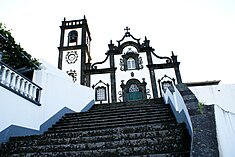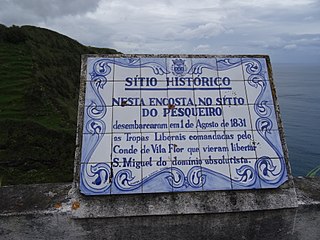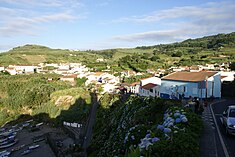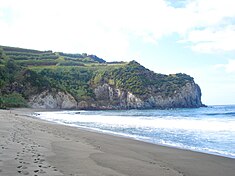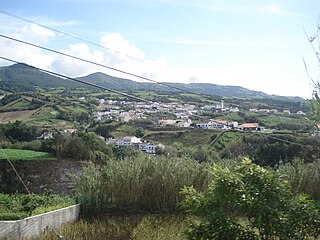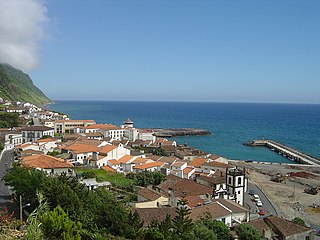| Porto Formoso | |
| Civil Parish | |
The expanse of tea fields from the regional roadway looking towards the coastal community of Porto Formoso | |
| Official name:Freguesia do Porto Formoso | |
| Country | |
|---|---|
| Autonomous Region | |
| Island | São Miguel |
| Municipality | Ribeira Grande |
| Localities | Ladeira da Velha,Porto Formoso |
| River | Ribeira dos Moinhos |
| Center | Porto Formoso |
| - elevation | 35 m (115 ft) |
| - coordinates | 37°49′19″N25°25′32″W / 37.82194°N 25.42556°W Coordinates: 37°49′19″N25°25′32″W / 37.82194°N 25.42556°W |
| Highest point | |
| - location | Espigão da Ovelha |
| - elevation | 884 m (2,900 ft) |
| - coordinates | 37°46′42″N25°26′28″W / 37.77833°N 25.44111°W |
| Lowest point | Sea Level |
| - location | Atlantic Ocean |
| Area | 12.79 km2 (5 sq mi) |
| - urban | .37 km2 (0 sq mi) |
| Population | 1,265 (2011) |
| Density | 99/km2 (256/sq mi) |
| Settlement | fl. 1509 |
| - Parish | 2 June 1509 |
| LAU | Junta Freguesia |
| - location | Rua Padre João B. Couto |
| - elevation | 28 m (92 ft) |
| - coordinates | 37°49′22″N25°25′39″W / 37.82278°N 25.42750°W |
| President Junta | Emanuel Janeiro Faria |
| Timezone | Azores (UTC-1) |
| - summer (DST) | Azores (UTC0) |
| Postal Zone | 9625-429 |
| Area Code & Prefix | (+351) 292 XXX-XXXX |
| Patron Saint | Nossa Senhora da Graça |
| Wikimedia Commons: Porto Formoso (Ribeira Grande) | |
| Geographic detail from Instituto Geográfico Português (2010) | |
Porto Formoso is a civil parish in the municipality of Ribeira Grande in the Portuguese archipelago of the Azores. The population in 2011 was 1,265, [1] in an area of 12.79 km². [2]

Portugal, officially the Portuguese Republic, is a country located mostly on the Iberian Peninsula in southwestern Europe. It is the westernmost sovereign state of mainland Europe, being bordered to the west and south by the Atlantic Ocean and to the north and east by Spain. Its territory also includes the Atlantic archipelagos of the Azores and Madeira, both autonomous regions with their own regional governments.

The Azores, officially the Autonomous Region of the Azores, is one of the two autonomous regions of Portugal. It is an archipelago composed of nine volcanic islands in the North Atlantic Ocean about 1,360 km (850 mi) west of continental Portugal, about 1,643 km (1,021 mi) west of Lisbon, in continental Portugal, about 1,507 km (936 mi) northwest of Morocco, and about 1,925 km (1,196 mi) southeast of Newfoundland, Canada.

